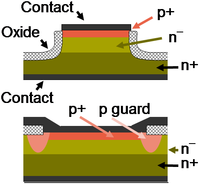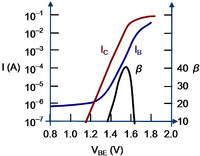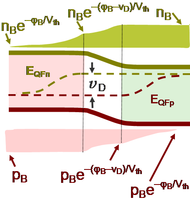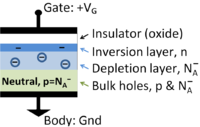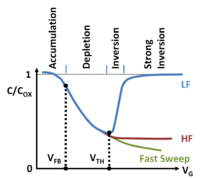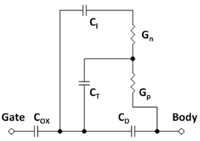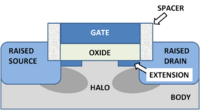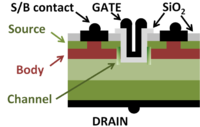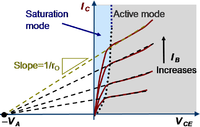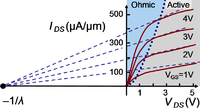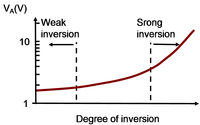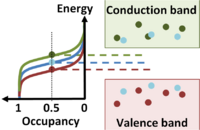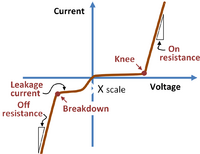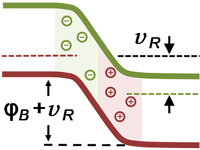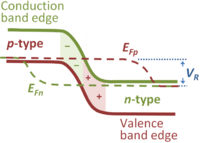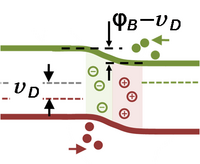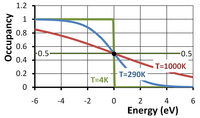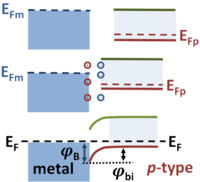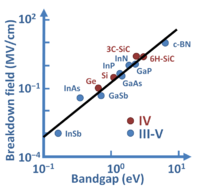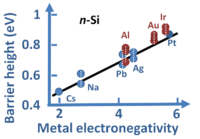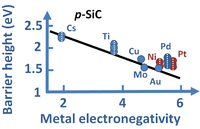User:John R. Brews/Devices: Difference between revisions
Jump to navigation
Jump to search
imported>John R. Brews (Created page with "==Devices== {{Gallery-mixed |caption=Devices |width=200 |lines=5 |Two diode structures.PNG|Mesa diode structure (top) and planar diode structure with guard-ring (bottom). |Planar...") |
imported>John R. Brews |
||
| Line 26: | Line 26: | ||
|Fermi function.PNG|Fermi occupancy function ''vs''. energy departure from Fermi level in volts for three temperatures | |Fermi function.PNG|Fermi occupancy function ''vs''. energy departure from Fermi level in volts for three temperatures | ||
|FCC Fermi surface.PNG|Fermi surface in '''k'''-space for a nearly filled band in the face-centered cubic lattice | |FCC Fermi surface.PNG|Fermi surface in '''k'''-space for a nearly filled band in the face-centered cubic lattice | ||
}} | |||
{{Gallery-mixed | |||
|caption=More devices | |||
|width=200 | |||
|lines=5 | |||
|Silicon conduction band ellipsoids.JPG|A constant energy surface in the silicon conduction band consists of six ellipsoids. | |||
|Planar Schottky diode.PNG|Planar Schottky diode with ''n<sup>+</sup>''-guard rings and tapered oxide. | |||
|Schottky & pn diode IV curves.PNG|Comparison of Schottky and ''pn''-diode current voltage curves. | |||
|Schottky barrier height.PNG|Schottky barrier formation on ''p''-type semiconductor. Energies are in eV. | |||
|Schottky barrier (forward bias).PNG|Schottky diode under forward bias ''V<sub>F</sub>''. | |||
|Schottky barrier (reverse bias).PNG|Schottky diode under reverse bias ''V<sub>R</sub>''. | |||
|Breakdown field vs bandgap.PNG|Critical electric field for breakdown ''versus'' bandgap energy in several materials. | |||
|Schottky barrier vs. electronegativity.PNG|Schottky barrier height ''vs.'' metal electronegativity for some selected metals on ''n''-type silicon. | |||
|Schottky barrier on p-SiC.PNG|Theoretical dependence of Schottky barrier heights for diodes using ''p''-SiC ''vs.'' electronegativity of the metal according to Mönch | |||
}} | }} | ||
Revision as of 07:47, 15 July 2011
Devices
| Devices | ||||||||||||||||||||||||||||||||||||||||||||||||||||||||||||||||||
| ||||||||||||||||||||||||||||||||||||||||||||||||||||||||||||||||||
| More devices | |||||||||||||||||||||||||||||
| |||||||||||||||||||||||||||||
